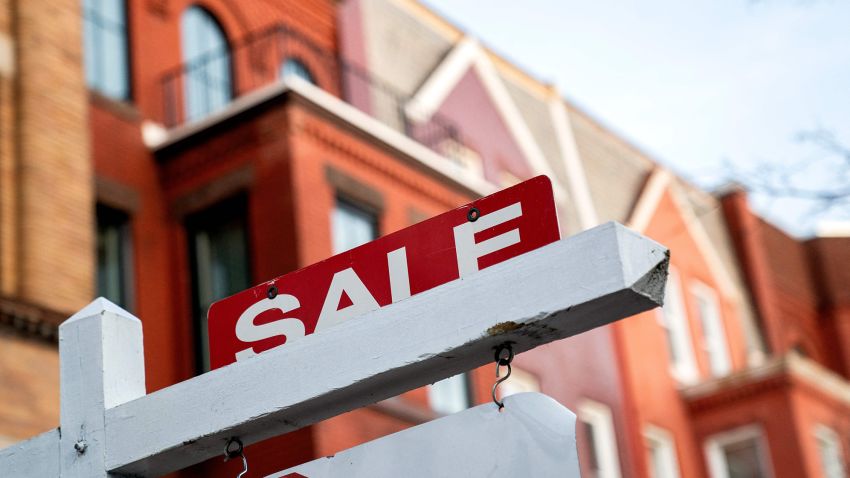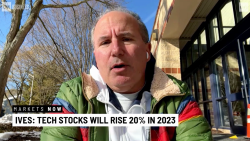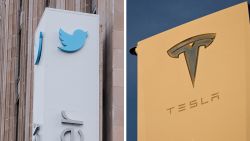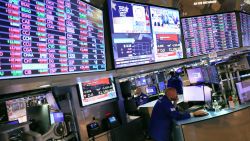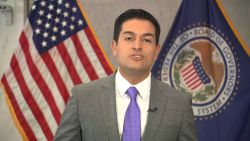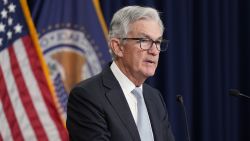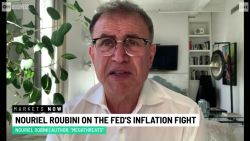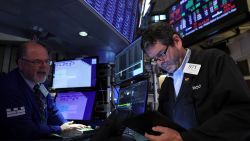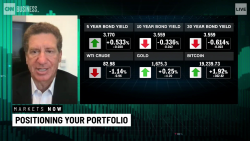Editor’s Note: This is an updated version of a story that originally ran on December 14, 2022.
Interest rates are higher (again), courtesy of the Federal Reserve, which hiked its benchmark interest rate Wednesday, for the eighth time in a row since last March.
So how come you’re not getting a higher rate on your bank savings? If your hard-earned money is just sitting in an account at a big-name bank earning bunk (still), you can do much better by moving it to an online bank’s high-yield savings account.
And there are plenty of other ways you can benefit from rising rates, while also protecting yourself from their additional costs.
Bank savings: Shop around
Higher rates mean your liquid savings — such as those you set aside for emergency expenses or shorter-term goals like a down payment or vacation fund — can finally earn some money for you after years of earning practically nothing.
“With rates still rising and inflation now declining, it is the best of both worlds for savers. Consider locking in longer-term CDs which are peaking now, and seek out one of the top-yielding savings accounts, which are pulling in more than 4% and are still rising,” said Greg McBride, chief financial analyst at Bankrate.
Some online high-yield savings accounts now offer rates as high as 4.35%, well above the national savings account average, which as of January 25 was a paltry 0.23%, according to Bankrate.
Among the highest-yielding CDs, there are some federally insured one-year CDs with rates as high as 4.85%, well above the current 1.47% national average, McBride said.
So, shop around. If you make a switch to an online bank or credit union, however, be sure to only choose those that are federally insured.
Another high-yield savings option
Given today’s still-high rates of inflation, Series I savings bonds may be attractive because they’re designed to preserve the buying power of your money. They’re currently paying 6.89%.
But that rate will only be in effect for six months and only if you buy an I Bond by the end of April, after which the rate is scheduled to adjust. If inflation falls, the rate on the I Bond will fall, too.
There are some limitations: You can only invest $10,000 a year. You can’t redeem it in the first year. And if you cash out between years two and five, you will forfeit the previous three months of interest.
“In other words, I Bonds are not a replacement for your savings account,” McBride said.
Nevertheless, they preserve the buying power of your $10,000 if you don’t need to touch it for at least five years, and that’s not nothing. They also may be of particular benefit to people planning to retire in the next 5 to 10 years since they will serve as a safe annual investment they can tap if needed in their first few years of retirement.
Your credit card debt: Minimize the bite
If you’re carrying credit card debt, expect to see a hike in the rate you pay within a few statements. When the Fed funds rate goes up, various lending rates that banks charge their customers tend to follow.
The average credit card rate hit another record high of 19.95% as of February 1, up from 16.3% at the start of 2022, according to Bankrate.
Your best bet is to try to find a good balance-transfer card with an initial 0% rate and make a plan to pay off what you owe in the coming months before an even higher rate kicks in.
“Credit card rates are at record highs and still rising. Turbocharge your debt repayment efforts with a 0% balance transfer offer, some lasting as long as 21 months. This insulates you from further rate hikes and gives you a runway to get the debt paid off once and for all,” McBride said.
But first find out what, if any, fees you will have to pay (e.g., a balance transfer fee or annual fee), and what the penalties will be for late or missed payments during the zero-rate period. The best strategy is always to pay off as much of your existing balance as possible — on time every month — before the zero-rate period ends. Otherwise, any remaining balance will be subject to a new interest rate that could be higher than you had before, if rates continue to rise.
If you don’t transfer to a zero-rate balance card, another option might be to get a relatively low fixed-rate personal loan. The average personal loan rate is currently 10.6%, according to Bankrate. The best rate you can get would depend on your income, credit score and debt-to-income ratio. Bankrate’s advice: To get the best deal, ask a few lenders for quotes before filling out a loan application.
Your mortgage and home loans: Lock in fixed rates
Mortgage costs have been steadily rising over the past year.
For the week ending January 26, the 30-year fixed rate mortgage averaged 6.13%, well above where it was a year earlier, at 3.55%.
Mortgage rates aren’t tied to Fed hikes directly, but rather to movements in the 10-year Treasury yield.
As to where mortgage rates go next, look to inflation. If inflation keeps dropping and moving closer to the Fed’s 2% target, then mortgage rates are expected to drift lower too. But don’t expect them to go back to 3%.
So, if you’re close to buying a home or refinancing one, lock in the lowest fixed rate available to you.
That said, “rushing into the purchase of a big-ticket item like a house or car that doesn’t fit in your budget is a recipe for trouble, regardless of what interest rates do in the future,” said Texas-based certified financial planner Lacy Rogers.
If you’re already a homeowner with a variable-rate home equity line of credit, and you used part of it for a home improvement project, McBride recommends asking your lender if it’s possible to fix the rate on your outstanding balance, effectively creating a fixed-rate home equity loan.
If that’s not possible, consider paying off that balance by taking out a HELOC with another lender at a lower promotional rate, McBride suggested.
The variable rate on a home equity line of credit or a fixed rate on a home equity loan will rise because their formulas are directly tied to the Fed’s rates.
HELOC rates are currently averaging 7.65%, well above the 4.11% average a year ago, according to Bankrate, while the average fixed rate on a 15-year home equity loan is 7.86%.
Your overall portfolio: Seek broad exposure and pricing power
Given that inflation has peaked and the ingredients for a soft landing continue to fall into place, the markets may be kinder to investors this year.
“The outlook for equity and fixed income returns has improved, and a balanced approach [in your portfolio] makes sense,” said Yung-Yu Ma, chief investment strategist at BMO Wealth Management.
That’s not to say markets won’t remain choppy in the near term. But, Ma noted, “a soft landing for the economy looks not only possible but likely.”
Any cash you have sitting on the sidelines might be put into the equity and fixed income markets in regular intervals over the next six to 12 months, he suggested.
Ma remains bullish on value stocks, especially small cap ones, which have outperformed over the past six months. “We expect that outperformance to persist going forward on a multi-year basis,” he said.
Regarding real estate, Ma noted, “the sharply higher interest and mortgage rates are challenging…and that headwind could persist for a few more quarters but we expect stabilization in those markets by year end.”
Commodities, meanwhile, have come down in price. However, they are still “a good hedge, given the uncertainty in energy markets and the consumption of industrial metals that is needed to facilitate energy transition,” he said.
Broadly speaking, Ma suggests making sure your overall portfolio is diversified across equities. The idea is to hedge your bets, since some of those areas will come out ahead, but not all of them will.
That said, if you’re planning to invest in a specific stock, consider the company’s pricing power and how consistent the demand is likely to be for their product, said certified financial planner Doug Flynn, co-founder of Flynn Zito Capital Management.
Bonds: Start moving back to longer-term maturities
Last year, as the Fed was aggressively raising rates, Flynn was advising clients to move more money into shorter-term bonds since — compared to long-term bonds — their prices had fallen more and their yields had risen more.
But now, his thinking is that the Fed may stop hiking rates at some point this year, so for money you won’t need for five or more years, it would be better to seek out higher-quality bonds, with intermediate- to long-term maturities because their yields are now rising.
“We are going longer with maturities now in bonds and extending duration under the guise that at some point this year rates could peak, and then the Fed might be in a position to begin lowering rates. Especially if we have a recession,” Flynn said.
That said, Flynn noted, if you are investing money you will need in the next one to three years, his advice is to continue investing in shorter-term bonds.
And for those in higher income tax brackets, “a similar opportunity exists in tax-free municipal bonds.”
Muni prices have dropped significantly and, while they have started to improve, yields have risen overall and many states are in better financial shape than they were pre-pandemic, Flynn noted.
If you’re not comfortable building your own bond portfolio, there are plenty of mutual funds and ETFs that can do so for you.
After two weeks of banking turmoil, the Federal Reserve on Wednesday continued its bid to beat down inflation by raising its key interest rate again, the ninth such hike over the past year.


